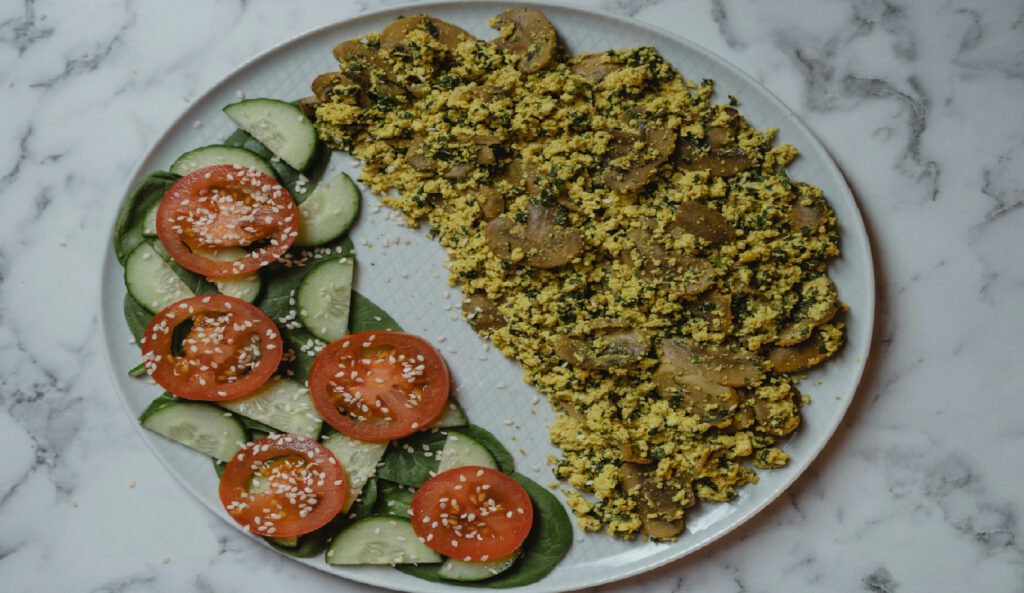Stretch Your Grocery Budget Without Sacrificing Flavor or Nutrition

Eating healthy doesn’t have to mean breaking the bank. A low-budget healthy meal plan is achievable with a little planning and resourcefulness. This article unpacks strategies to craft nutritious and affordable meals that fuel your body without draining your wallet.
Embrace Wholesome Staples: The Foundation of Your Budget-Friendly Diet
Building a low-budget healthy meal plan starts with selecting nutritious staples that are versatile and affordable. Here are some staples to stock your pantry with:
- Whole Grains: Brown rice, quinoa, whole-wheat pasta, and oats provide essential carbohydrates, fiber, and vitamins. These staples can be used in a variety of dishes, from breakfast porridge to hearty pasta salads.
- Beans and Lentils: These protein powerhouses are exceptionally affordable and packed with nutrients. They can be used in soups, stews, salads, and even burgers to create satisfying and budget-friendly meals.
- Fruits and Vegetables: Frozen fruits and vegetables are often more affordable than fresh produce and retain most of their nutrients. Stock up on frozen broccoli, mixed greens, berries, and bananas for quick and easy meal additions.
- Eggs: Eggs are a complete protein source and a budget-friendly breakfast staple. They can also be used in soups, salads, and baked goods for added protein and versatility.
Plan Your Meals and Combat Waste: Save Money and Time
Planning your meals is crucial for creating a low-budget healthy meal plan. By taking stock of your pantry and fridge staples, you can plan recipes that minimize waste and maximize the use of ingredients. Here are some tips:
- Create a Weekly Meal Plan: Dedicate some time each week to plan your meals. Consider including leftover dinners for lunches to avoid waste and save time during the week.
- Utilize Leftovers Creatively: Leftovers can be transformed into entirely new dishes. Use leftover roasted chicken in sandwiches, salads, or pot pie. Leftover roasted vegetables can be added to soups or omelets.
- Shop with a List: Stick to your grocery list to avoid impulse purchases that can derail your budget. Focus on buying in bulk for staples that you use frequently, but be mindful of expiration dates.
Embrace Budget-Friendly Protein Sources: Fuel Your Body Without Breaking the Bank
Protein is an essential nutrient for muscle repair, growth, and satiety. However, certain protein sources can be expensive. Here are some affordable protein options for your low-budget healthy meal plan:
- Beans and Lentils (mentioned previously): These plant-based protein powerhouses are versatile and can be used in a variety of dishes.
- Eggs (mentioned previously): A complete protein source at an affordable price, eggs are perfect for breakfast, lunch, or dinner.
- Chicken: Chicken breast or thighs can be purchased in bulk and cooked in a variety of ways. Leftover chicken can be used for multiple meals
- throughout the week. Consider purchasing whole chickens and breaking them down yourself for further cost savings.
- Tofu and Tempeh: These soy-based protein options are a great alternative for vegetarians and vegans. They can be marinated and grilled, stir-fried, or crumbled and used in sauces or vegetarian “meatloaf.”
- Greek Yogurt: A high-protein snack or breakfast option, Greek yogurt can be topped with fruit, nuts, or granola for added nutrients and flavor.
Cook at Home More Often: Invest in Your Health and Your Wallet
Eating out frequently can significantly impact your food budget. Focus on cooking more meals at home with your low-budget healthy meal plan. Here are some benefits of cooking at home:
- Control Over Ingredients: When you cook at home, you control the ingredients that go into your food. This allows you to choose healthier options and avoid hidden sugars, sodium, and fats often found in restaurant meals.
- Portion Control: Restaurant portions tend to be larger than necessary, leading to overconsumption. Cooking at home allows you to control portion sizes and avoid unnecessary calories.
- Save Money: Eating out can be expensive. By cooking more meals at home, you can significantly reduce your food budget.
Sample Low-Budget Healthy Meal Plan: A Week of Delicious and Affordable Eats
Here’s a sample low-budget healthy meal plan for one week to spark your creativity:
Monday:
- Breakfast: Oatmeal with berries and nuts
- Lunch: Leftover lentil soup with a whole-wheat roll
- Dinner: Chicken stir-fry with brown rice and vegetables
Tuesday:
- Breakfast: Scrambled eggs with whole-wheat toast and avocado
- Lunch: Black bean and corn salad with a side of whole-wheat crackers
- Dinner: Salmon with roasted sweet potatoes and broccoli
Wednesday:
- Breakfast: Greek yogurt with granola and banana slices
- Lunch: Leftover chicken salad sandwich on whole-wheat bread
- Dinner: Lentil and vegetable stew with a side of whole-grain bread
Thursday:
- Breakfast: Whole-wheat pancakes with fruit topping
- Lunch: Tuna salad sandwich on whole-wheat bread with a side salad
- Dinner: Vegetarian chili with a side of brown rice
Friday:
- Breakfast: Smoothie made with Greek yogurt, fruit, and spinach
- Lunch: Leftover chili with a side salad
- Dinner: Baked tofu with roasted vegetables and brown rice
Weekend:
Plan to cook a larger meal on the weekend that can be used for leftovers throughout the following week. This can help save time and money during the busy workweek.
Embrace Budget-Friendly Cooking Techniques: Stretch Your Ingredients Further
There are many cooking techniques that can help you stretch your ingredients further and create delicious meals on a budget for your low-budget healthy meal plan. Here are a few ideas:
- Batch Cooking: Cook large batches of grains, soups, or stews on the weekend and portion them out for lunches or dinners throughout the week.
- Meal Prepping: Dedicate some time each week to prep ingredients for your meals. This can include chopping vegetables, cooking grains, and marinating protein. Meal prepping saves time during busy weekdays and helps you stay on track with your healthy eating goals.
- Utilize Leftovers Creatively (mentioned previously): Don’t throw away leftovers! They can be transformed into entirely new dishes. Get creative and use leftovers in soups, salads, sandwiches, or frittatas.
- Embrace Slow Cooker Meals: Slow cookers are a great way to create flavorful and healthy meals with minimal effort. Throw in your ingredients in the morning, and come home to a ready-made meal.
Seasoning is Your Secret Weapon: Enhance Flavor Without Added Costs
Store-bought sauces and dressings can be expensive and often contain hidden sugars and sodium. However, you can easily add flavor to your meals with a well-stocked spice cabinet. Here are some essential spices to consider:
- Garlic Powder: A versatile spice that adds depth of flavor to almost any dish.
- Onion Powder: Another versatile spice that adds a savory flavor to dishes.
- Chili Powder: This spice blend adds a touch of heat and smokiness to dishes.
- Cumin: A warm spice commonly used in Mexican and Indian cuisine.
- Italian Seasoning: A blend of herbs that adds Mediterranean flavor to dishes.
- Salt and Pepper: These basics can enhance the flavor of any meal.
Embrace Affordable Snacks: Keep Your Energy Levels Up Between Meals
Healthy snacks are essential for keeping your energy levels up and avoiding unhealthy snacking throughout the day. Here are some affordable and healthy snack options for your low-budget healthy meal plan:
- Fruits and Vegetables: Fresh fruit slices, baby carrots, or celery sticks with hummus are nutritious and satisfying snacks.
- Hard-boiled Eggs: A protein-packed snack that is easy to prepare and portable.
- Greek Yogurt with Fruit: A high-protein snack that is also a good source of calcium.
- Trail Mix: Make your own trail mix with nuts, seeds, and dried fruit for a nutritious and energy-boosting snack.
- Air-Popped Popcorn: A whole-grain snack that is low in calories and can be flavored with spices or herbs.
Conclusion: Nourish Your Body and Your Wallet with a Low-Budget Healthy Meal Plan
Eating healthy doesn’t have to be expensive. By following the tips in this article and creating a low-budget healthy meal plan, you can nourish your body with delicious and nutritious meals without breaking the bank. With a little planning, creativity, and resourcefulness, you can enjoy a healthy lifestyle that fuels your body and your wallet. Remember, the most valuable investment you can make is in your health, and a nutritious diet doesn’t have to come at a premium. So, get creative in the kitchen, embrace budget-friendly ingredients, and embark on a journey of delicious and affordable healthy eating!


